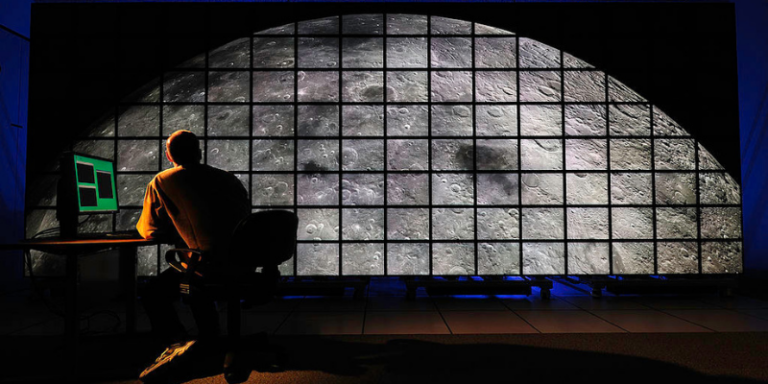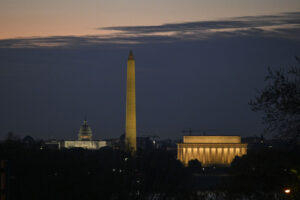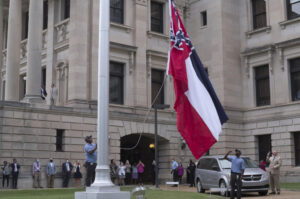The Spill: Hidden Figure
Weekly news you can use.
By: GenZ Staff | July 2, 2020 | 933 Words

(Photo by Joe McNallyGetty Images)
NASA Names Headquarters after a Hidden Figure
Have you seen the movie Hidden Figures about a black woman working for NASA in the 1960s? If so, did you realize it was based on a true story? Well, now, the space agency’s Washington D.C. headquarters will be named after Mary W. Jackson, the woman who not only inspired a book and movie, but countless black women across the nation.
Mary grew up during a time of strong racism and segregation, yet she was still able to obtain a dual college degree in math and physical science. Born and raised in Hampton, Virginia, she graduated from Hampton Institute in 1942 and later worked as a U.S. Army secretary. The National Advisory Committee for Aeronautics, which in 1958 would become NASA, first recruited Mary in 1951. She began working in the segregated West Area Computing Unit.
 After two years, she was offered a position in the Supersonic Pressure Tunnel program, where she got hands-on experience conducting experiments. Mary’s supervisor suggested she take a training program that would promote her from mathematician to engineer. At that time, special permission had to be given to black people because the classes were segregated.
After two years, she was offered a position in the Supersonic Pressure Tunnel program, where she got hands-on experience conducting experiments. Mary’s supervisor suggested she take a training program that would promote her from mathematician to engineer. At that time, special permission had to be given to black people because the classes were segregated.
Mary went on to become the first female black engineer for NASA and was part of the “Hidden Figure” group made up of black women at the agency.
NASA Administrator Jim Bridenstine announced the naming of the headquarters, saying,
“Today, we proudly announce the Mary W. Jackson NASA Headquarters building … Hidden no more, we will continue to recognize the contributions of women, African Americans, and people of all backgrounds who have made NASA’s successful history of exploration possible.”
Mary passed away in 2005. In 2019, President Donald Trump signed the Hidden Figures Congressional Gold Medal Act, awarding the honor to her and her co-workers.
A 51st State?
In 1959, Alaska and Hawaii were the last two states to join the Union, giving us the 50 states we now have in the U.S. Could it be possible that the U.S. will soon gain a new state? On June 26, the House of Representatives approved legislation to make Washington D.C. its own state – the 51st in the nation. The bill passed in a 232-180 vote with all Republicans voting against and all except one Democrat voting yea.

Lincoln Memorial, the Washington Monument, and the US Capitol (Photo by Celal Gunes/Anadolu Agency via Getty Images)
The nation’s capital is in Washington, District of Columbia. The area is not a state itself, but a district, which is controlled by the federal government. Unlike states, it does not have representation in Congress.
Those who want to give Washington, D.C. statehood claim to be suffering under “taxation without representation.” They want to rename the area to Washington, Douglass Commonwealth after first president George Washington and Frederick Douglass, a former slave turned abolitionist.
Republicans are set against the move. They feel it will give the Democrats too much power since the area is largely populated by people who support that party. If passed, the new state would get one seat in the House and two in the Senate.
President Donald Trump has suggested he will veto the bill if it arrives at his desk. The law would still have to be passed by the Senate before that.
This isn’t the first time a move to turn D.C. into a state has been attempted; others tried in 1888, 1921, and 1993, but none have reached such success until now.
Currently, D.C. is overseen by a mayor. If it becomes its own state, a governor would be elected, giving that office a lot more power.
Changing the Mississippi Flag
The institution of slavery has always been a blight on American history, and many people still claim to feel the effects of racial inequality today. The recent spike in destroying anything linked to the Confederacy is just one of the ways people are fighting back. Across the nation, Confederate symbols and statues are being torn down, but one state has held out on removing the Confederate flag design from its state flag … until recently.

(Photo by Alan Chin/Xinhua via Getty) (Xinhua/ via Getty Images)
Mississippi’s state flag has the southern symbol in the top left corner. In 2001, a vote was taken to redesign the flag without the Confederate emblem, but nearly two-thirds of the citizens voted against such a change. Now, after the tragic death of George Floyd and the demands to remove anything reminding people of slavery and oppression, the state representatives changed their minds on the matter.
A bill to change the state flag was passed. The next step is for the governor, Tate Reeves, to review and sign the legislation into law. Once that is done, Mississippians will vote on the proposed change in the November election.
Mississippi State Representative Ed Blackmon, a black man, said, “I would guess a lot of you don’t even see the flag in the corner right there. There are some of us who notice it every time we walk in here, and it’s not a good feeling.”
The Confederate flag was designed just before the Civil War began, as a way for states who had seceded from the Union to show solidarity. The flag was not a symbol of slavery, but of a southern “nation” that fought to keep its way of life without government interference. Unfortunately, this way of life included slavery.
Mississippi is the last state to remove the Confederate symbol from its flag.

















